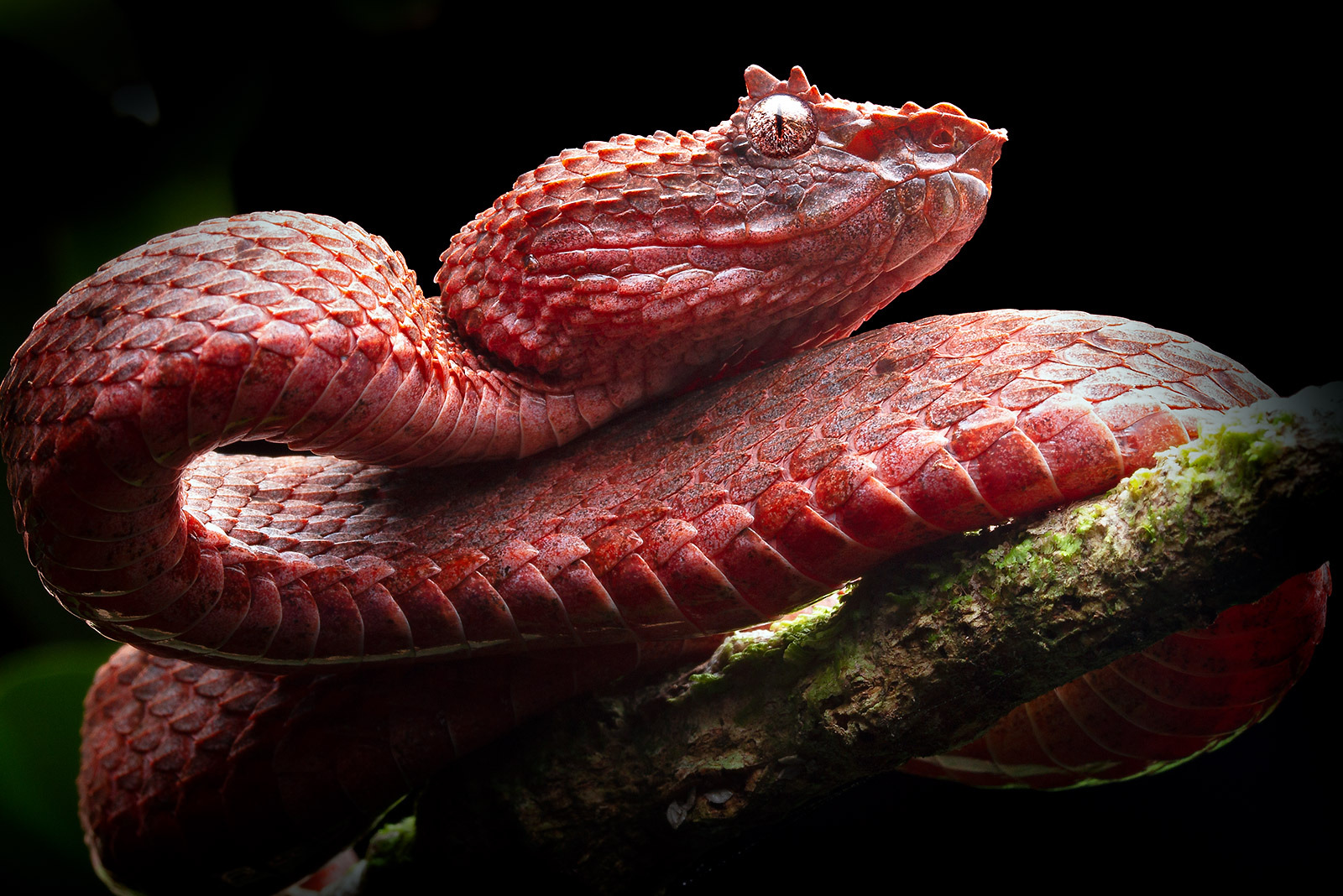Search News Archives
Filter News Articles
Additional Navigation
Liberty biology professor plays part in discoveries of new snake species
March 11, 2024 : By Ryan Klinker - Office of Communications & Public Engagement
After treks into the mountains of Ecuador, Panama, and Colombia with the Khamai Foundation, an Ecuadorian biodiversity protection organization, Liberty University Professor of Biology Dr. Kyle Harris aided in the publishing of two papers designating and further defining newly discovered snake species in parts of Central and South America.
The discoveries of Tudor’s Coffee Snake (Ninia guytudori) and a new classification for variations of the venomous Eyelash Pitviper (of which Harris helped find two of six species) were published in “Evolutionary Systematics,” an international, peer-reviewed, life science journal devoted to whole-organism biology.

Harris’ involvement, both in the trips and the publishing process, was supported by Liberty’s Office of Sponsored Programs & Research.
The Khamai Foundation’s effort to identify and describe these snakes has been in the works for roughly a decade. Harris joined the project after a 2021 trip he led with Liberty students to Ecuador, where he met members of Khamai who were working with another conservation organization, Tropical Herping.
Harris was invited to join Khamai in Panama in Fall 2022 to look for different variations of the eyelash pitvipers, and they located two at the time: the Blotched Eyelash Pitviper (Bothriechis supraciliaris) and Central American Eyelash Pitviper (Bothriechis nigroadspersus). They later traveled to Columbia in Spring 2023 to search for more, but they came home empty handed.
Eyelash pitvipers are defined primarily by their enlarged, spiky scales above their eyes that resemble eyelashes. They are also known to be polychromatic, meaning they have notable variations in color despite being the same species, and these variations can be seen in close proximity to each other. With the exception of Bothriechis supraciliaris, all of the other subsets in the paper are under Bothriechis schlegelii, considered a widely distributed species exhibiting remarkable variation in coloration, scale counts, and shape of the supraciliary scales abobe the eyes.
As for the coffee snake, Harris said his role was mostly helping to get the work published.
These discoveries mark the first time Harris has participated in a species discovery, and he said he is looking forward to more through his connection with the Khamai Foundation.
“Being even just a small part of it has been thrilling,” Harris said. “It’s a special opportunity for any biologist to be able to help collaborate with others in describing something that’s new. That whole process, looking back, I’m sort of in awe.”
After helping to search for specimens and bring the final manuscripts to publication for both papers, Harris said he was honored to see the news published.
“One of the cool things about these two papers is that there is so much yet to be unraveled and described in the created order. The diversity is out there for us to go and try to discover and describe. There’s been a lot of great fruit from the partnership, and it’s exciting to think about what can happen in the future.”
Harris has taught various biology courses residentially at Liberty University’s School of Health Sciences since 2014. In addition to herpetology (the zoological study of reptiles and amphibians), his current research interests involve investigating the ecology of crayfish in local freshwater environments. He is a member of the Ecological Society of America, Virginia Academy of Science, Virginia Herpetological Society, and Virginia Natural History Society.
“We are proud of the work that Dr. Harris is doing – work that has led to the discovery of new species and is impacting our understanding of the biodiversity of God’s creation; I am grateful for his contributions,” said School of Health Sciences Dean Dr. Heidi DiFrancesca. “Research is an integral component of the academic experience, both for our faculty and students, and Dr. Harris skillfully and dynamically combines teaching and research while mentoring students in his conservation and ecological research program. As we continue to pursue research within the School of Health Sciences, Dr. Harris’ work will continue to be important in our pursuit. I am excited to watch where his research leads.”
Tudor’s Coffee Snake (Ninia guytudori)
Native to the cloud forests of northwestern Ecuador, the Tudor’s Coffee Snake reaches about 1 foot in length and has a “uniformly black” coloring with a white “collar” around its neck (Evolutionary Systematics). This white band also connects to the snake’s lower lip, giving it the appearance of a bridle. Like other coffee snakes, the Tudor’s Coffee Snake often inhabits coffee plantations, especially in areas where its cloud forest habitat has been destroyed. Researchers found these snakes moving along the forest floor at night and “hidden under rotten logs” during daytime. The name “guytudori” is in recognition of Guy Tudor, a naturalist and scientific illustrator with a deep fondness for birds and all animals who had an impact on the conservation of South America’s birds.

Central American Eyelash Pitviper (Bothriechis nigroadspersus)
Bothriechis nigroadspersus is an arboreal snake — meaning it lives in trees — that inhabits evergreen lowland/foothill forests, plantations, and rural gardens (Evolutionary Systematics). The name “nigroadspersus” comes from the Latin words “nigrum” (meaning “black”) and adspersus (meaning “sprinkled”), referring to the minute black specks scattered throughout its upper body. It differs from the Bothriechis supraciliaris by having a higher number of ventral scales, no broad blotches or dorsal bands, and a different pattern on the dorsal side of the snout.

Blotched Eyelash Pitviper (Bothriechis supraciliaris)
Bothriechis supraciliaris is also an arboreal snake, and it inhabits evergreen mountain forests, cloud forests, clearings with coffee and banana plantations, edges of farm fields, and rural gardens (Evolutionary Systematics). It is known to be found along the Pacific slopes of the Cordillera de Talamanca mountain range in southwestern Costa Rica and western Panama. Its name comes from the Latin words “supra” (meaning “above”) and cilium (meaning “eyelash”), referring to the prominent spinelike scales above the eye.



